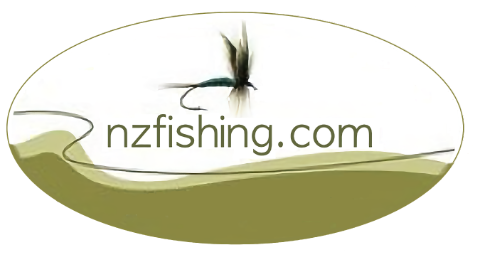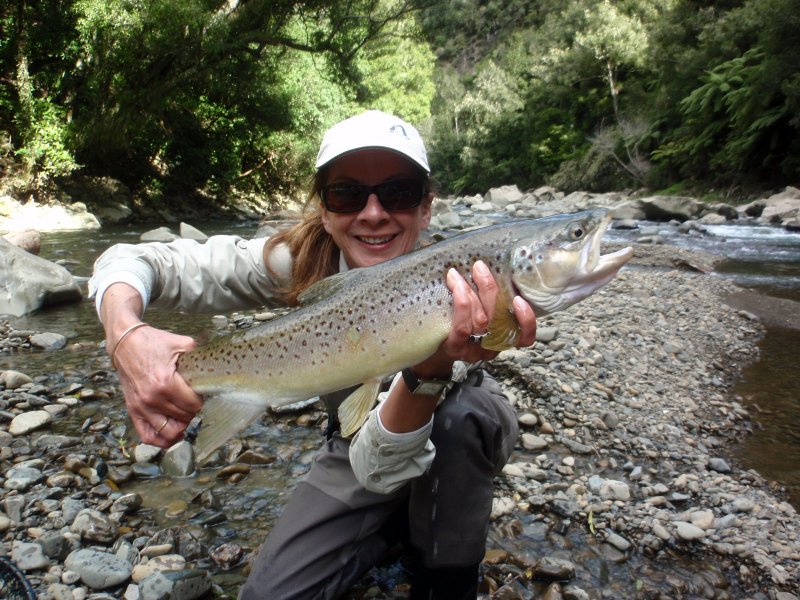Ruakituri River
|
The Ruakituri River is a premier trout fishery offering anglers the chance to fish for magnificent trophy trout within a beautiful setting. It offers a range of fly fishing opportunities from wilderness fishing for huge trout in the headwaters to easily accessible river fishing in the middle and lower reaches. |
| Fish type | A large population of both brown and rainbow trout. Above the Waitangi Falls in the headwaters only rainbow trout (many of impressive size) are present. | |
| Situation | The Ruakituri River rises in Te Urewera National Park on the slopes of the Huiarau Ranges and then flows south east to join the Hangaroa River. | |
| Maps | ||
| Check conditions | View the MetService weather forecast. | |
| While you're there | The Ruakituri Hut or Murphy's Hut both on the banks of the river provide an excellent base for a small group of anglers. | |
| Description |
This is a large river with a huge variety of waters from deep pools to long rapids and runs. Although only open to fly fishing, it provides ample opportunities for dry fly, nymphing or wet lining. While the upper reaches require some walking the lower and middle reaches are generally very accessible. |
|
| Upper reaches |
From above the Waitangi Falls to the headwaters (within Te Urewera National Park). Description The upper reaches of the Ruakituri are by far the most scenic part of the river and offer the angler a true wilderness fishing experience. This section is remote and only suitable for those prepared to hike in. Fish numbers and size The river here holds only rainbow trout which average 2- 3 kg but with many over 5 kg caught each year. Access Getting to the upper reaches of the Ruakituri River requires considerable walking. Good walking tracks follow the river for much of its length but there are two gorges that can be difficult to pass especially in poor weather conditions. Anglers who make the effort to walk in are rewarded with superb fishing for well-conditioned fish in a pristine environment. See the Ruakituri access map. |
|
| Middle reaches |
From the Erepeti Bridge to the Waitangi Falls. Description The middle section of the Ruakituri, with its easy access, is by far the most popular and productive section. There are many kilometers of excellent fishing available with the Fish numbers and size The brown and rainbow trout present in this section average around 2 kg. The fish population is very high. Access There is good access to the river along the Papuni road upstream from the junction with the Erepeti road. The section from the end of the Papuni road up to the Waitangi Falls (approximately 5 km) can be reached by following a well-defined track. See the Ruakituri access map. |
|
| Lower reaches |
From the Ruakituri Bridge to the Erepeti road junction. Description This part of the river is much wider and slower than in the middle and upper reaches, though still with a variety of waters, including series of long runs interspersed with very Fish numbers and size Both brown and rainbow trout are present, mostly 1-2 kg in size. Access There is easy access along the Ruakituri road which follows the true right bank up to the the Ruakituri Bridge and follows the true left bank to the junction with the Erepeti road. See the Ruakituri access map. |
|
| Methods | The Ruakituri River is flyfishing only. All fly fishing methods are suitable. During November and December anglers can fish to very free rising trout; however many regard this river is ideal nymph water. | |
| Recommended tackle |
In the headwaters and upper reaches the water can be very clear and so lighter tackle is preferable. This must be balanced however by the fact that this section of the river is very powerful and holds some massive fish. The middle and lower reaches require tackle that will allow the angler to cast a reasonable distance. A weight six or seven rod is ideal and should cover most conditions. |
|
| Recommended lures |
Nymphs: Dry flies: From late spring through summer there can be an excellent sedge hatch on the river making sedge patterns the logical choice. Also as there are good stands of native bush, many terrestrial insects are blown onto the water so during the day beetle patterns in early summer, and cicada and wasp patterns in late summer can be successful. In the early summer evenings there can be good caddis hatches proving exciting dry fly fishing up to and at times beyond dark. Wet flies: During the warmer evenings when trout are swirling just below the surface, use "wee-wets" such as Invicta, March Brown, Greenwell’s Glory or Claret and Mallard fished just subsurface . |
|
| Tributaries |
The major tributaries are the Hangaroa River, Anini Stream and the Waipaoa Stream. The other small streams that enter the river are of interest only where they enter the Ruakituri: during the warm summer months trout often congregate at the stream mouths to take advantage of the cooler water entering the river. |
|
| Regulations (1) | ||
| Applicable to | Ruakituri River and tributaries (excluding Hangaroa) above Te Reinga Falls | |
| Region | Eastern region regulations | |
| Season | 1 Oct-30 Jun | |
| Methods | Flyfishing only. | |
| Bag limit | 2 | |
| Size limit (cm) | Above Waitangi Falls: 600 mm maximum
Below Waitangi Falls: None |
|
| Regulations (2) | ||
| Applicable to | Ruakituri River below Te Reinga Falls | |
| Region | Eastern region regulations | |
| Season | 1 Oct-30 Jun | |
| Methods | Artificial fly | |
| Bag limit | 2 | |
| Size limit (cm) | None | |



